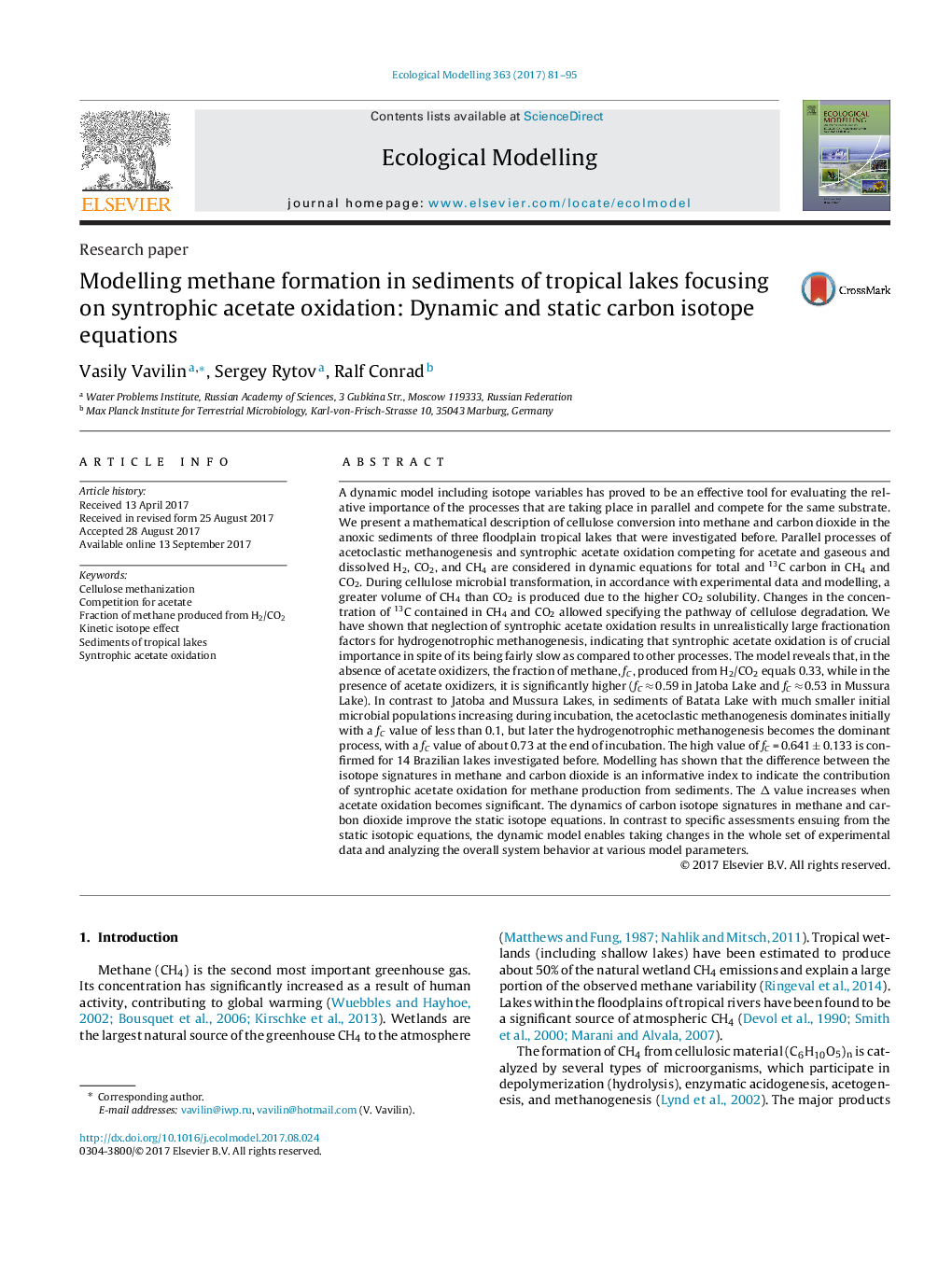| Article ID | Journal | Published Year | Pages | File Type |
|---|---|---|---|---|
| 5742015 | Ecological Modelling | 2017 | 15 Pages |
â¢Changes in 13CH4 and 13CO2 allow specifying the pathway of cellulose degradation.â¢New static isotope equations demonstrate the significance of acetate oxidation.â¢Fraction of methane from H2/CO2 can identify the pathway of cellulose methanization.â¢Without acetate oxidation, the isotope fractionation in H2/CO2 methanogenesis is high.â¢With acetate oxidation, the fractionation in H2/CO2 methanogenesis becomes much less.
A dynamic model including isotope variables has proved to be an effective tool for evaluating the relative importance of the processes that are taking place in parallel and compete for the same substrate. We present a mathematical description of cellulose conversion into methane and carbon dioxide in the anoxic sediments of three floodplain tropical lakes that were investigated before. Parallel processes of acetoclastic methanogenesis and syntrophic acetate oxidation competing for acetate and gaseous and dissolved H2, CO2, and CH4 are considered in dynamic equations for total and 13C carbon in CH4 and CO2. During cellulose microbial transformation, in accordance with experimental data and modelling, a greater volume of CH4 than CO2 is produced due to the higher CO2 solubility. Changes in the concentration of 13C contained in CH4 and CO2 allowed specifying the pathway of cellulose degradation. We have shown that neglection of syntrophic acetate oxidation results in unrealistically large fractionation factors for hydrogenotrophic methanogenesis, indicating that syntrophic acetate oxidation is of crucial importance in spite of its being fairly slow as compared to other processes. The model reveals that, in the absence of acetate oxidizers, the fraction of methane, fC, produced from H2/CO2 equals 0.33, while in the presence of acetate oxidizers, it is significantly higher (fC â 0.59 in Jatoba Lake and fC â 0.53 in Mussura Lake). In contrast to Jatoba and Mussura Lakes, in sediments of Batata Lake with much smaller initial microbial populations increasing during incubation, the acetoclastic methanogenesis dominates initially with a fC value of less than 0.1, but later the hydrogenotrophic methanogenesis becomes the dominant process, with a fC value of about 0.73 at the end of incubation. The high value of fC = 0.641 ± 0.133 is confirmed for 14 Brazilian lakes investigated before. Modelling has shown that the difference between the isotope signatures in methane and carbon dioxide is an informative index to indicate the contribution of syntrophic acetate oxidation for methane production from sediments. The Î value increases when acetate oxidation becomes significant. The dynamics of carbon isotope signatures in methane and carbon dioxide improve the static isotope equations. In contrast to specific assessments ensuing from the static isotopic equations, the dynamic model enables taking changes in the whole set of experimental data and analyzing the overall system behavior at various model parameters.
